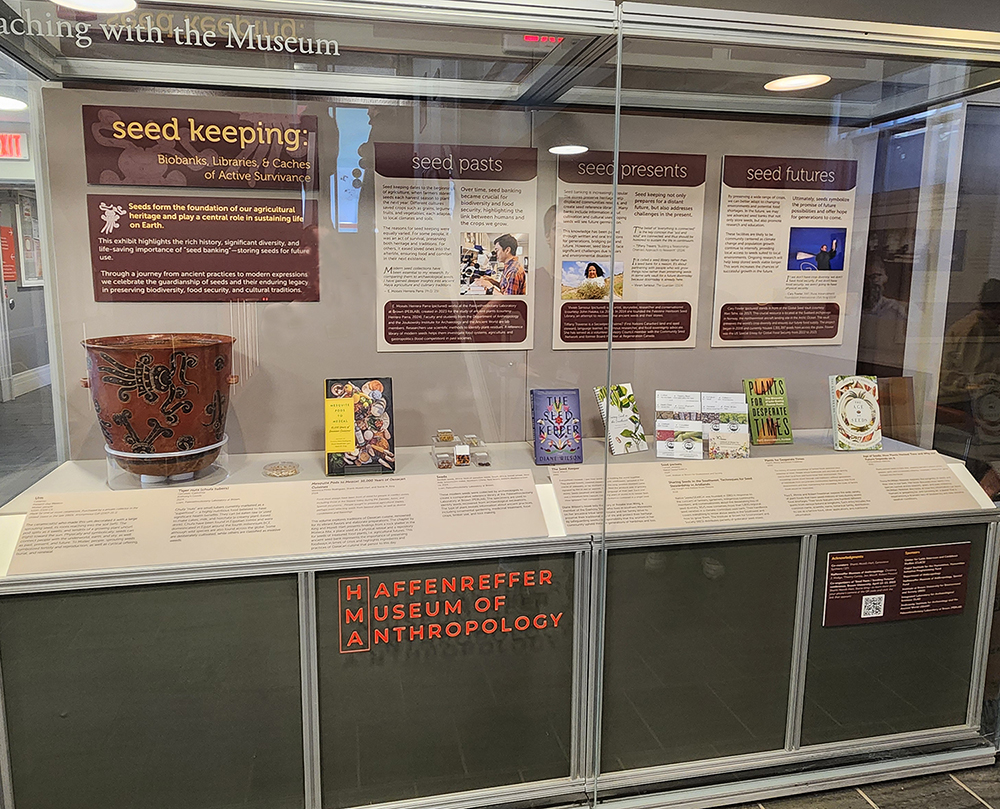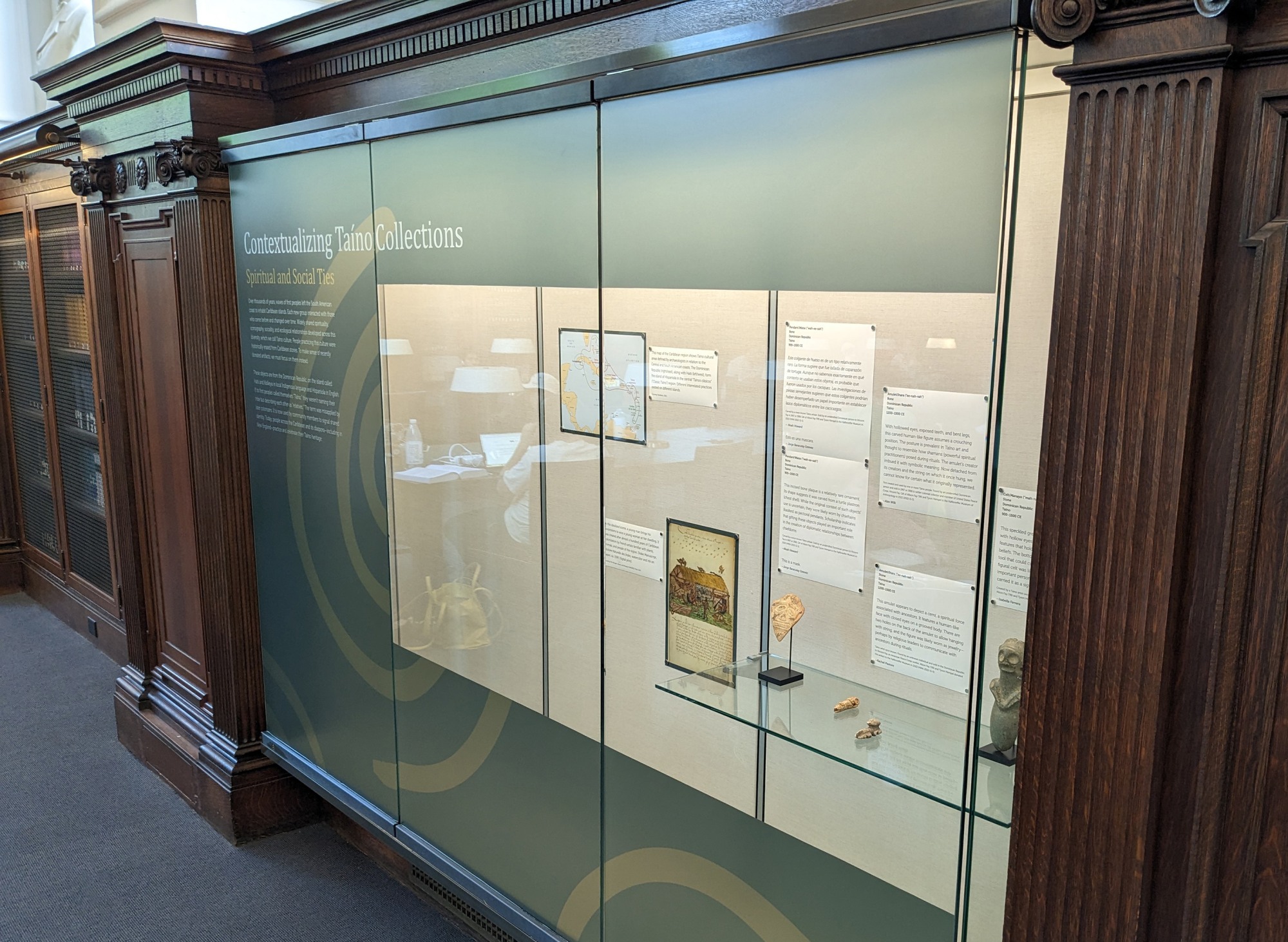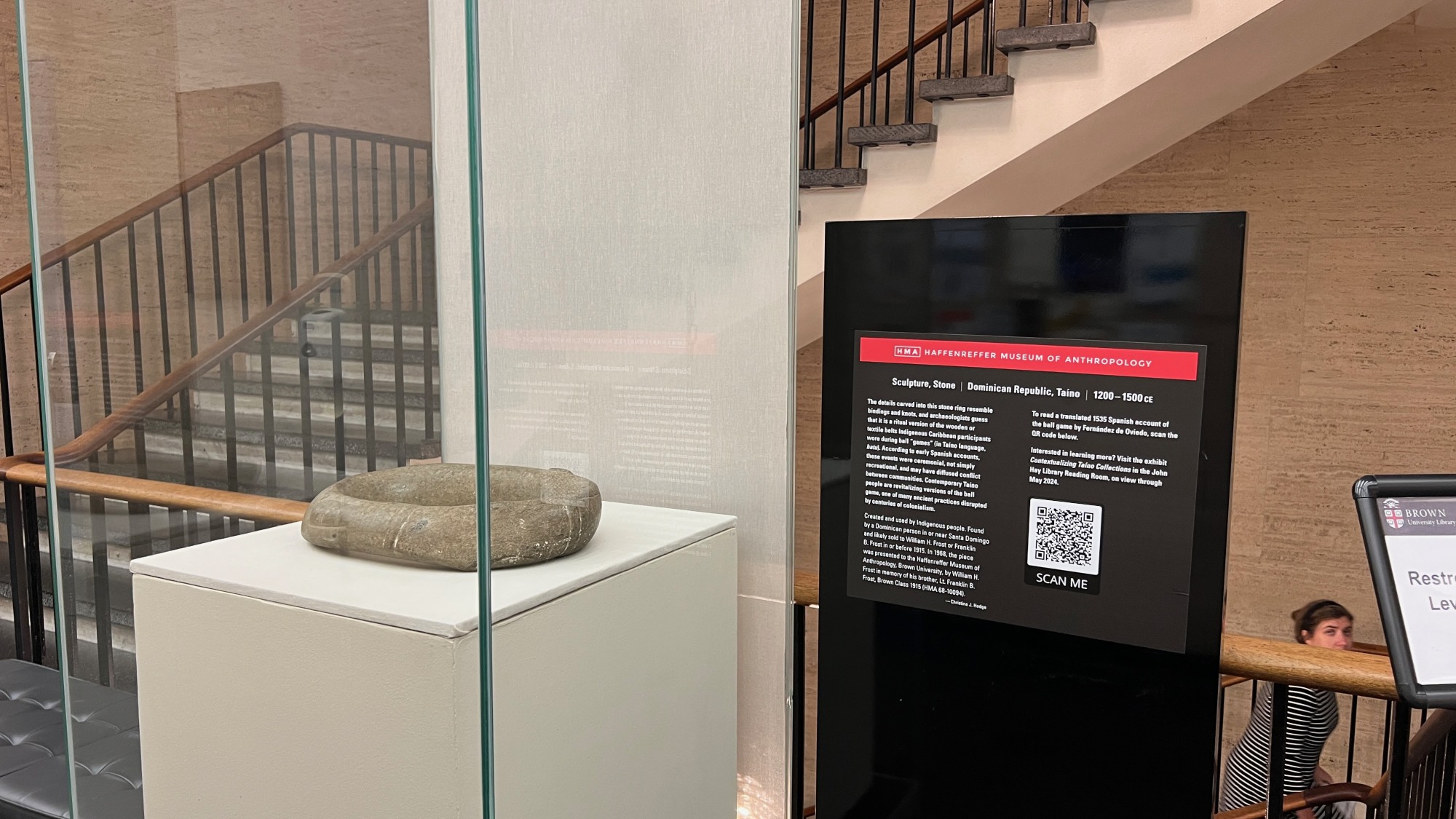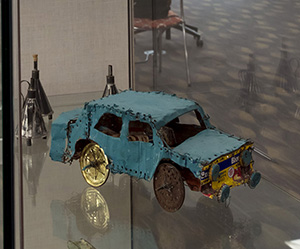The Haffenreffer Museum hosts student-curated satellite exhibits on the Brown University campus.
Satellite Cases
Small-scale Exhibits around the Brown University Campus.
Satellite Cases
Small-scale Exhibits around the Brown University Campus.
Stephen Robert '62 Campus Center
 Seed Keeping: Biobanks, Libraries & Caches of Active Survivance
Seed Keeping: Biobanks, Libraries & Caches of Active Survivance
This exhibit accompanies:
Seed Pasts/Seeding Futures: Interdisciplinary Symposium
Seeds form the foundation of our agricultural heritage and play a central role in sustaining life on earth. This exhibit highlights the rich history, significant diversity, and life-saving importance of “seed banking” – storing seeds for future use.
Through a journey from ancient practices to modern expressions, we celebrate the guardianship of seeds and their enduring legacy in preserving biodiversity, food security, and cultural traditions.
John Hay Library
 Contextualizing Taíno Collections
Contextualizing Taíno Collections
In this exhibit, student curators share their work to put a new donation of ancient Caribbean artifacts into cultural, historical, political, and contemporary contexts. First peoples of many Caribbean islands developed shared beliefs and practices, which today we call Taíno culture. People practicing this culture were historically erased from Caribbean stories. To make sense of Taíno artifacts recently donated to the Haffenreffer Museum, the exhibit focuses on these "erased" people instead. The exhibit shares collections from the Haffenreffer Museum of Anthropology and John Hay Library.
on view May 4, 2023–June 6, 2025
Rockefeller Library
Sculpture of a ball-game belt
 Stone
Stone
Dominican Republic
Taíno
1200–1500 CE
The details carved into this stone ring resemble bindings and knots, and archaeologists guess that it is a ritual version of the wooden or textile belts Indigenous Caribbean participants wore during ball “games” (in Taíno language batu). Contemporary Taíno people are revitalizing versions of the ball game, one of many ancient practices disrupted by centuries of colonialism.
 Aluminum and tin
Aluminum and tin
A current satellite exhibition in the Rockefeller Library reading room explores forms of non- industrial recycling of the metallic element aluminum and tin.
While both scrap aluminum and tin are important source of the current industrial supply, in many parts of the world people use scrap aluminum and tin creatively to fashion enterprising and useful items ranging from functional household objects to jewelry and toys.
Aluminum, an abundant element, can only be extracted from bauxite ore with the availability of plentiful electricity necessary to smelt it and has therefore only became available in recent human history. Tin by contrast, is scarcer than aluminum but much easier to refine because of its low melting point. Alloyed with copper to make bronze, tin was used by humans as early as 5,000 years ago.
Highlights of the exhibition include a toy car made by Maasai children in Kenya from old coffee and margarine tins, an Aymara votive house model from Bolivia made from powdered milk tin cans and a sand cast aluminum cooking pot from Guinea made from aluminum beverage cans.
Ironically, the industrial aluminum and tin products which are mostly in the form of containers often return to the countries that largely are the sources of the raw materials used to make those products. The bauxite mines in West Africa that are the source of much of the new aluminum
used to make beverage cans today.